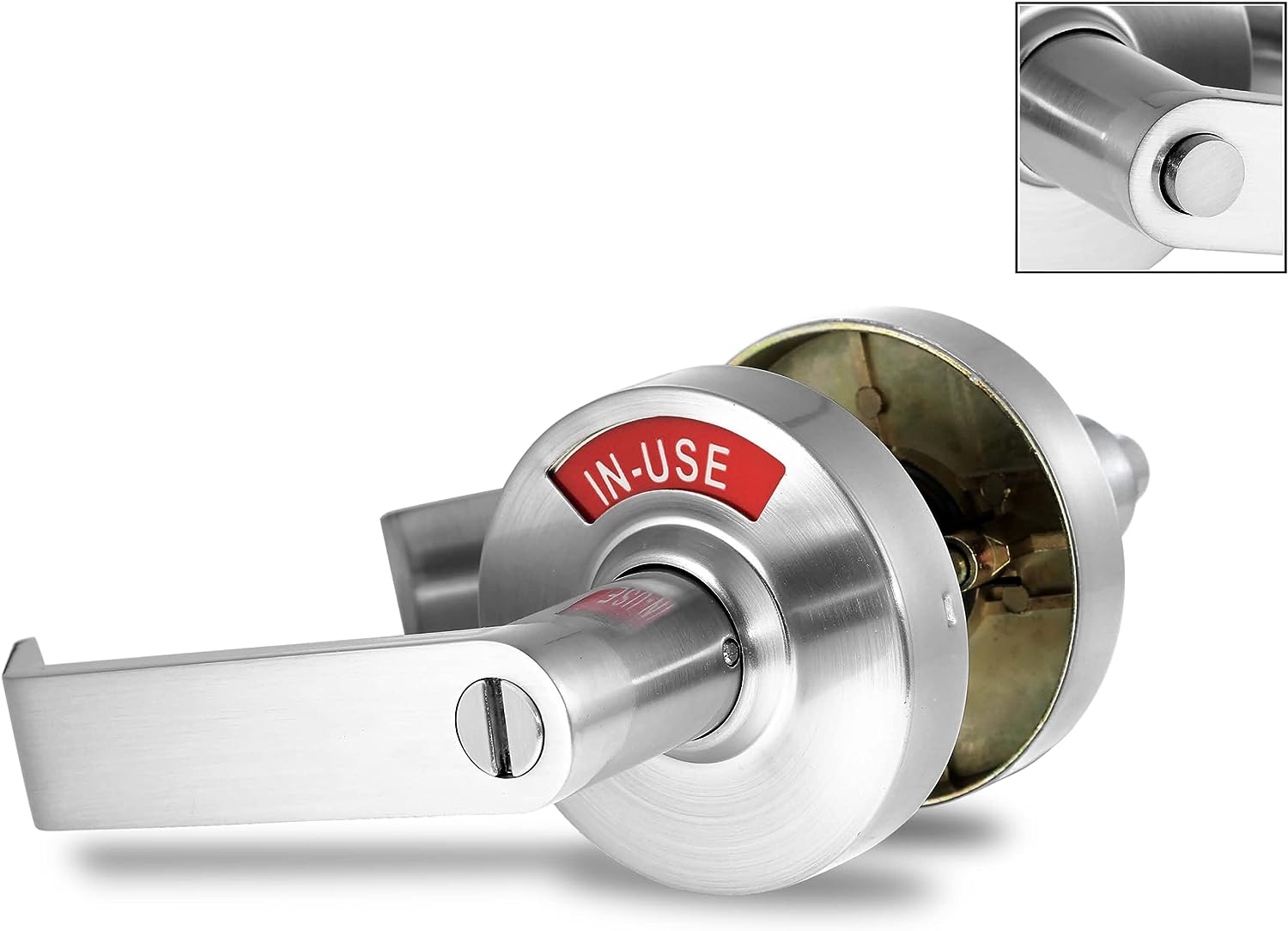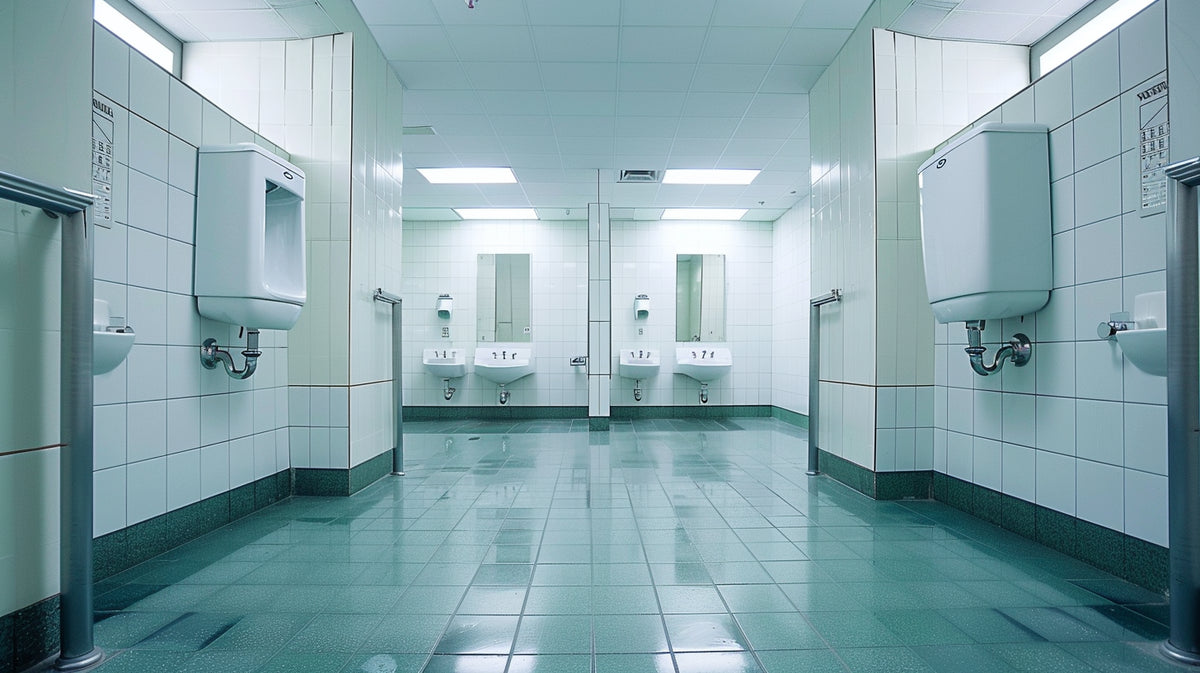Public restrooms are a vital part of our daily lives, encountered in malls, parks, offices, and a myriad of public spaces. While often overlooked, the security and privacy of these facilities are crucial for ensuring a safe and comfortable experience for everyone. In this guide, we will explore the importance of these elements, the challenges faced, and practical strategies to enhance both security and privacy in public restrooms. The goal is to provide actionable insights for businesses, facility managers, and public authorities to create restrooms that are not just functional, but also secure and respectful of individual privacy.
The Importance of Security and Privacy in Public Restrooms
Public restrooms serve diverse individuals daily, making their security and privacy not just amenities but essential requirements. The significance of these aspects can be understood through various lenses:
User Safety
Safety is a primary concern in public restrooms. A lack of secure facilities can lead to incidents that threaten the physical well-being of users. Statistics, although varied, point towards a not insignificant number of reported incidents in public restrooms annually, ranging from theft to more severe crimes. Beyond physical harm, there is a psychological dimension to consider. A secure restroom environment directly influences the comfort and peace of mind of users, impacting their overall experience in a public space.
Privacy Concerns
Privacy in restrooms is a fundamental expectation. It's a space where individuals are vulnerable, and any breach of privacy can have significant psychological and emotional consequences. This expectation extends beyond the individual stalls to the entire restroom area, encompassing entrances and exits. In the legal realm, privacy in restrooms is often protected under various laws and regulations, underscoring its importance from an ethical standpoint as well.
Impact on Businesses and Public Spaces
The state of restroom facilities, including their security and privacy, reflects directly on the reputation of the establishment they're part of. Businesses and public spaces can suffer reputational damage and a loss of trust if their restrooms are perceived as unsafe or lacking privacy. Conversely, well-maintained and secure restrooms can enhance the overall perception of space, encouraging repeat visits and positive word-of-mouth.
Current Challenges in Public Restroom Security and Privacy
While the importance of restroom security and privacy is widely acknowledged, several challenges often hinder effective implementation. Addressing these issues is crucial for creating safer and more private restroom experiences.
Ineffectual Design and Layout
Many public restrooms suffer from design flaws that compromise both security and privacy. Poorly lit areas, obscured corners, and inadequate stall design can create vulnerabilities. Such layouts not only facilitate potential security breaches but also make users feel uneasy, impacting their sense of privacy and comfort.
Vandalism and Neglect
Vandalism remains a persistent issue in public restrooms. Graffiti, broken fixtures, and damaged locks directly impact the perception of safety and privacy. Furthermore, neglected maintenance can lead to malfunctioning locks and doors, leaving users exposed and vulnerable.
Technological Shortcomings
The lack of modern technological solutions, such as surveillance systems that respect privacy, can leave restrooms more susceptible to security breaches. While surveillance is a delicate matter in such private settings, the absence of any form of monitoring can make it challenging to ensure user safety.
Cultural and Social Issues
Social and cultural factors also play a significant role. For example, restrooms that are not gender-inclusive can pose serious security and privacy concerns for transgender and non-binary individuals. Additionally, societal stigma and behaviors can lead to uncomfortable or unsafe situations within these facilities.
Legal and Regulatory Gaps
In some regions, the laws and regulations governing public restroom security and privacy are either outdated or insufficiently enforced. This lack of legal clarity and enforcement can lead to inconsistencies in how restroom security and privacy are addressed across different locations.
Overcrowding and Misuse
Public restrooms in high-traffic areas often face overcrowding issues, which not only strains the facilities but also reduces privacy and security. Moreover, misuse of these facilities, such as using them for activities other than their intended purpose, further exacerbates security and privacy concerns.
Best Practices for Enhancing Security in Public Restrooms
Enhancing the security of public restrooms involves a combination of thoughtful design, technology integration, and proactive management. Here are some best practices that can significantly improve restroom security:
Physical Design and Layout
- Visibility: Ensure that the entrance and interior of the restroom are visible from common areas while maintaining privacy. Avoid creating hidden corners or secluded areas where security incidents could go unnoticed.
- Well-lit Spaces: Good lighting is crucial. It deters criminal activity and makes users feel safer. Ensure that all areas inside and outside the restroom are adequately lit.
- Secure Stall Design: Use sturdy materials for stalls and ensure that they are properly fitted and maintained. Full-length doors and partitions can enhance privacy and security.
Technological Solutions
- Security Cameras: Strategically placed cameras outside the restroom can deter potential security threats. Ensure that these do not invade privacy but provide enough coverage to monitor suspicious activities.
- Emergency Call Buttons: Install call buttons within stalls and at strategic locations for users to alert security personnel in case of an emergency.
Maintenance and Supervision
- Regular Checks and Maintenance: Routine inspections can help identify and rectify issues such as broken locks or damaged doors promptly, maintaining a secure environment.
- Security Personnel: Having attendants or security staff nearby or periodically checking the restrooms can be an effective deterrent against security breaches.
Responsive Reporting Systems
- Feedback Mechanisms: Implement systems where users can report security concerns or maintenance issues quickly and easily, such as QR codes or helpline numbers displayed within the restroom.
- Prompt Response to Reports: Ensure that any reported issues are addressed swiftly to maintain the trust and safety of restroom users.
Ensuring Privacy in Public Restrooms
Privacy in public restrooms is as crucial as security, demanding specific measures to ensure that users feel comfortable and respected in these spaces. Here are key strategies for enhancing privacy in public restrooms:
Design Considerations
- Stall Layout and Construction: Opt for full-enclosure stalls where possible, minimizing gaps between doors and frames. Consider soundproofing materials to reduce noise transmission.
- Partition Heights and Angles: Ensure partitions are high enough to prevent visibility over the top and are designed to block sightlines from outside the restroom.
Locks and Indicators
- Functional Locks: Every stall should have a working lock. Regular checks and maintenance are essential to ensure they remain operational.
- Occupancy Indicators: Installing locks with clear occupancy indicators (red/green) can prevent accidental intrusions, enhancing user comfort.
Signage and Guidelines
- Clear Signage: Place signs instructing proper restroom use and reminding users of privacy norms.
- Usage Policies: Establish and display guidelines on respecting others' privacy, such as not using mobile devices in the restroom.
Private Spaces
Single-Occupancy Options: Where space allows, include single-occupancy restrooms. These are especially important for providing privacy to individuals with specific needs, such as parents with young children, elderly users, or people with disabilities.
Ventilation and Acoustics
- Effective Ventilation: A well-ventilated restroom reduces odors and creates a more comfortable environment.
- Sound Management: Incorporate materials and design elements that minimize sound travel, allowing for a more private experience.
Respectful Atmosphere
- Cultural Sensitivity: Be mindful of diverse cultural norms around privacy and design restrooms accordingly.
- Inclusivity in Design: Ensure that restrooms cater to the needs of all users, including gender-neutral options to respect the privacy of all individuals regardless of gender identity.
Legal Compliance and Standards
Adhering to legal standards and compliance is critical to managing public restrooms. These regulations are designed to ensure that restrooms are not only safe and private but also accessible to all users. Here’s an overview of key legal and regulatory considerations:
Accessibility Regulations
- Americans with Disabilities Act (ADA): In the United States, the ADA sets forth guidelines for public restrooms, mandating features like accessible stall sizes, grab bars, and appropriate sink heights to accommodate individuals with disabilities.
- International Accessibility Standards: Similar regulations exist in other countries, ensuring global standards in restroom accessibility and safety.
Privacy Laws
- Expectation of Privacy: Restrooms are generally recognized as private spaces, and there are laws that protect this privacy. For instance, it's illegal in many jurisdictions to install cameras inside public restrooms.
- Gender-Specific Regulations: Laws around gender-specific restrooms are evolving, with more places recognizing the need for gender-neutral facilities.
Health and Safety Standards
- Hygiene and Cleanliness: Regulations often stipulate standards for cleanliness and hygiene in public restrooms, which indirectly impacts privacy and safety.
- Building Codes: State building codes may dictate specific requirements for restroom facilities, including the number of fixtures relative to the building’s occupancy.
Compliance with Local Ordinances
- Regional Requirements: It’s crucial to be aware of local ordinances and regulations, as they can vary significantly from one region to another.
- Periodic Review and Updates: Regulations and standards can change, so it’s important for facility managers and business owners to stay informed and ensure ongoing compliance.
Documentation and Record-Keeping
- Inspection Records: Keeping detailed records of inspections, maintenance, and any modifications made to public restrooms can be crucial for demonstrating compliance with legal standards.
Maintaining compliance with these legal and regulatory standards is a matter of fulfilling legal obligations and ensuring that public restrooms meet the highest standards of safety, privacy, and accessibility. Regular reviews and updates to restroom policies and designs are necessary to stay aligned with these evolving standards.
Conclusion
The significance of secure and private restrooms cannot be overstated in a world where public spaces are integral to our daily lives. They are more than mere conveniences; they are essential spaces that reflect our commitment to safety, privacy, and respect for all individuals. This guide has highlighted the importance of addressing the twin security and privacy challenges in public restrooms, offering practical strategies for enhancement and compliance.
From thoughtful design to the adoption of technological solutions, and adherence to legal standards, each element plays a crucial role in shaping the restroom experience. By implementing these best practices, facility managers and business owners can create environments that are not only safe and private but also welcoming and inclusive.
As we continue navigating the complexities of public space management, remember that the smallest details can have the most significant impact. By prioritizing the security and privacy of public restrooms, we contribute to building a more considerate, respectful, and inclusive society.



